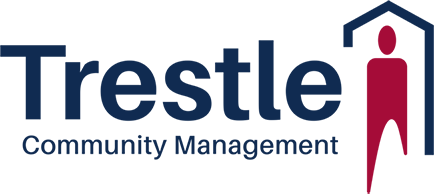Key Differences Between Homeowner and Association Insurance
In Washington State, the insurance landscape for Homeowners and Associations can be quite complex. Homeowners need to protect their property and assets, while Associations, such as Condos (COAs) or Homeowner Associations (HOAs), require coverage for shared areas and facilities. Understanding the differences between Homeowner and Association insurance is crucial for making informed decisions and ensuring adequate protection for both parties.
Homeowner Insurance

Homeowner insurance, also known as HO6, home, or hazard insurance, is a policy that provides financial protection for a Homeowner against various risks, such as property damage, theft, and personal liability. In Washington State, these policies generally cover the following:
- Dwelling Coverage: Insures the physical structure of the home, including the walls, roof, and built-in appliances. It helps pay for repairs or replacement if the property is damaged due to covered perils like fire, windstorm, or hail.
- Personal Property Coverage: Covers the Homeowner’s personal belongings, such as furniture, electronics, and clothing, in the event of theft or damage caused by a covered peril.
- Liability Coverage: Protects Homeowners in case someone is injured on their property and files a lawsuit. It covers legal expenses and any settlement or judgment amounts.
- Additional Living Expenses (ALE): In the event a home becomes uninhabitable due to a covered loss, ALE helps cover the costs of temporary housing and living expenses.
- Optional Coverages: Homeowners can choose to add endorsements to their policy, such as earthquake or flood insurance, depending on their specific needs and location.
Association Insurance
HOA and Condo Association insurance, also known as a master policy, is designed to cover shared areas and facilities in a residential community governed by an Association. In Washington State, these policies generally include the following coverages:
- Property Insurance: Covers damage to shared areas and structures, such as clubhouses, swimming pools, and playgrounds, resulting from covered perils like fire, wind, or vandalism.
- General Liability Insurance: Protects the Association in case someone is injured in a shared area or facility and files a lawsuit. It covers legal expenses and any settlement or judgment amounts.
- Directors and Officers (D&O) Liability Insurance: Insures the Association’s Board Members, officers, and volunteers in the event they are sued for alleged wrongful acts, errors, or omissions in their capacity as Association representatives.
- Fidelity/Crime Insurance: Protects the Association against theft, embezzlement, or fraud committed by Association employees, Board Members, or volunteers.
- Building Ordinance or Law Coverage: Covers additional costs incurred if repairs or reconstruction of damaged shared property must comply with new building codes or regulations.
Workers’ Compensation Insurance: If the Association has employees, this coverage is required by Washington State law and covers medical expenses and lost wages for employees injured on the job.
Key Differences
- Coverage Scope: Homeowner insurance protects the Homeowner’s individual property and assets, while Association insurance covers shared areas and facilities in a residential community.
- Policyholders: Homeowner insurance policies are held by individual Homeowners, whereas Association insurance policies are held by the Association itself, such as a condominium or HOA.
- Liability: Homeowner insurance provides liability coverage for injuries that occur on the Homeowner’s property, while Association insurance covers liability for injuries in shared areas and facilities.
In Washington State, both Homeowner insurance and Association insurance play essential roles in safeguarding property and assets. Homeowners need to secure their dwelling, personal belongings, and protect against liability claims, while Associations must ensure shared areas and facilities are adequately insured. Understanding these differences is crucial in making informed decisions and ensuring comprehensive protection for individuals and the Association.
Insurance requirements can vary by Association. To better familiarize yourself with the requirements assigned within your community, please review your Association’s governing documents available through Trestle’s My-Community Web Portal or contact your Community Association Manager for assistance.
Connecting with Trestle
Trestle regularly connects on LinkedIn, Facebook, and Twitter, and can be contacted through its website or at (425) 454-6404.



